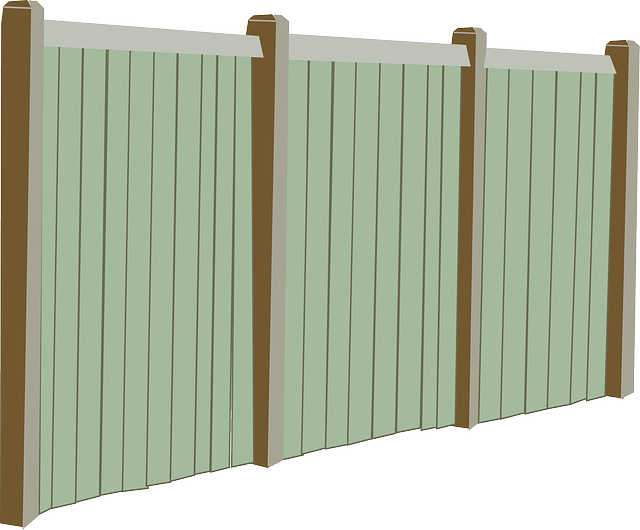Introducing Durable Wooden Fencing for Coastal Areas
Coastal regions present unique challenges when it comes to fencing, from relentless wind and salt spray to constant exposure to moisture. Understanding these challenges is the first step towards selecting the right solution—durable wooden fencing. This article guides you through the intricacies of coastal fencing, highlighting the advantages of sturdy wood types, offering installation and maintenance tips, and showcasing how custom designs can enhance the aesthetic appeal of your coastal property.
- Understanding Coastal Fencing Challenges
- Advantages of Durable Wooden Fencing
- Choosing the Right Wood Types
- Installation and Maintenance Tips
- Enhancing Coastal Aesthetics with Custom Designs
Understanding Coastal Fencing Challenges
Coastal areas present unique challenges when it comes to fencing due to their harsh, often severe, environmental conditions. Salt air, strong winds, and regular exposure to moisture can significantly impact the durability of traditional fencing materials. The constant barrage of storms, high tides, and waves can weaken and eventually destroy weaker barriers, leading to frequent maintenance or complete replacement.
These challenges require specialized fencing solutions that can withstand the coastal environment. Durable wooden fences designed for such settings should be made from rot-resistant wood species like cedar or redwood, treated with preservatives to enhance their resistance to decay and insect damage. Proper installation techniques, including elevated posts set in concrete, are crucial to ensure these fences remain sturdy and stable against the constant assault of coastal elements.
Advantages of Durable Wooden Fencing
Durable wooden fencing offers an array of advantages for coastal areas, where traditional materials often face harsh challenges from salt air, moisture, and extreme weather conditions. First, wood is a naturally attractive and classic material that can enhance the aesthetic appeal of any property, blending seamlessly with the coastal landscape. Its versatility allows it to be tailored to various styles, from rustic and natural to sleek and modern designs.
Moreover, durable wooden fencing provides excellent privacy and security for homes and businesses in coastal regions. Properly treated wood can withstand the relentless wind and rain, ensuring long-term protection against damage. This longevity translates into cost-effectiveness over time, as replacement costs are significantly reduced compared to other materials that may require frequent repairs or replacements due to environmental factors.
Choosing the Right Wood Types
When selecting wood for coastal fencing, understanding the local climate is key. Saltwater, high humidity, and strong winds can take a toll on any material, but certain tree species are better equipped to handle these challenges. Hardwoods like cedar, redwood, and teak are popular choices due to their natural resistance to rot, mold, and insect damage. These woods also have a beautiful, enduring grain that adds aesthetic appeal.
Consider the specific conditions in your coastal area; some regions may benefit more from fast-growing softwoods like spruce or pine, which can be treated with preservatives for added durability. Local hardware stores or timber experts can offer valuable insights into the best options based on your location and climate, ensuring your fencing not only looks great but also stands the test of time in a challenging environment.
Installation and Maintenance Tips
When installing wooden fencing in coastal areas, it’s crucial to prepare the ground properly by ensuring good drainage to prevent water damage. Use treated, weather-resistant wood and consider a double layer of protective coating for added durability. Regular cleaning with mild soap and water is essential to remove salt residue that can weaken the fence over time.
Maintenance is key for coastal fences. Inspect the fence periodically for any signs of rot or damage and repair as needed. Keep the area around the fence free from debris and vegetation, which can trap moisture. A fresh coat of sealant every couple of years will help maintain the fence’s integrity against harsh weather conditions.
Enhancing Coastal Aesthetics with Custom Designs
Durable Wooden Fencing has evolved beyond functional barriers, transforming into artistic elements that enrich coastal landscapes. Custom designs allow homeowners and local artisans to create unique pieces that blend seamlessly with the natural beauty of the coast. From intricate carvings mimicking marine life to stylized patterns inspired by tidal patterns, these fences become vibrant additions to beachfront properties.
By embracing custom designs, coastal communities can foster a sense of place and cultural identity. Each fence becomes a miniature work of art, contributing to the diverse tapestry of aesthetics that define the region. This approach not only enhances property values but also encourages tourism, as visitors are drawn to the charming and distinctive features that make each coastal area unique.
